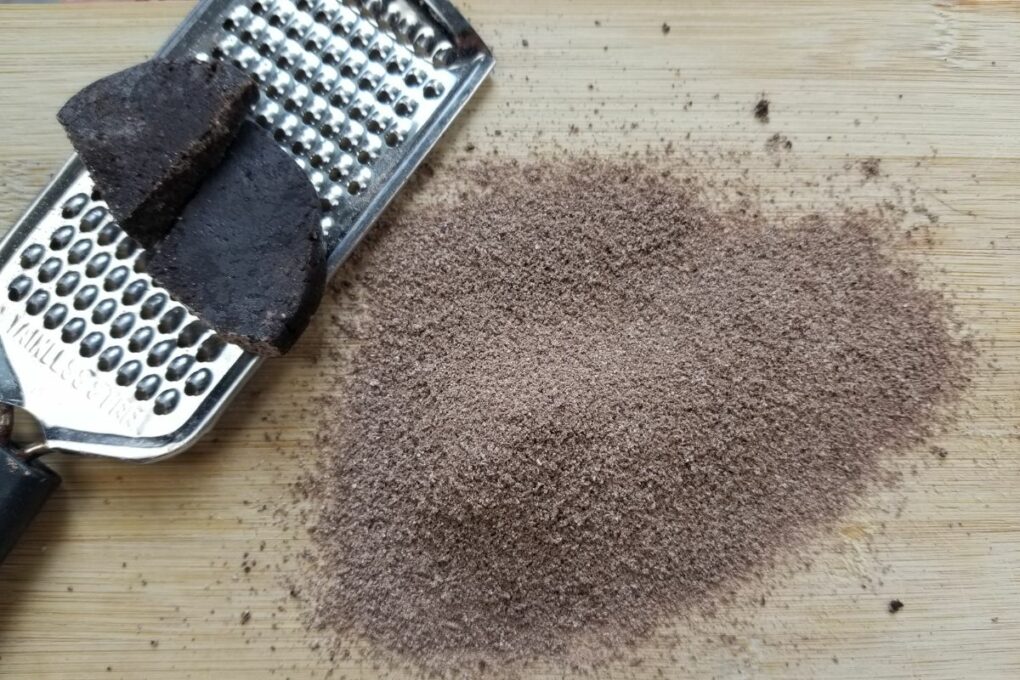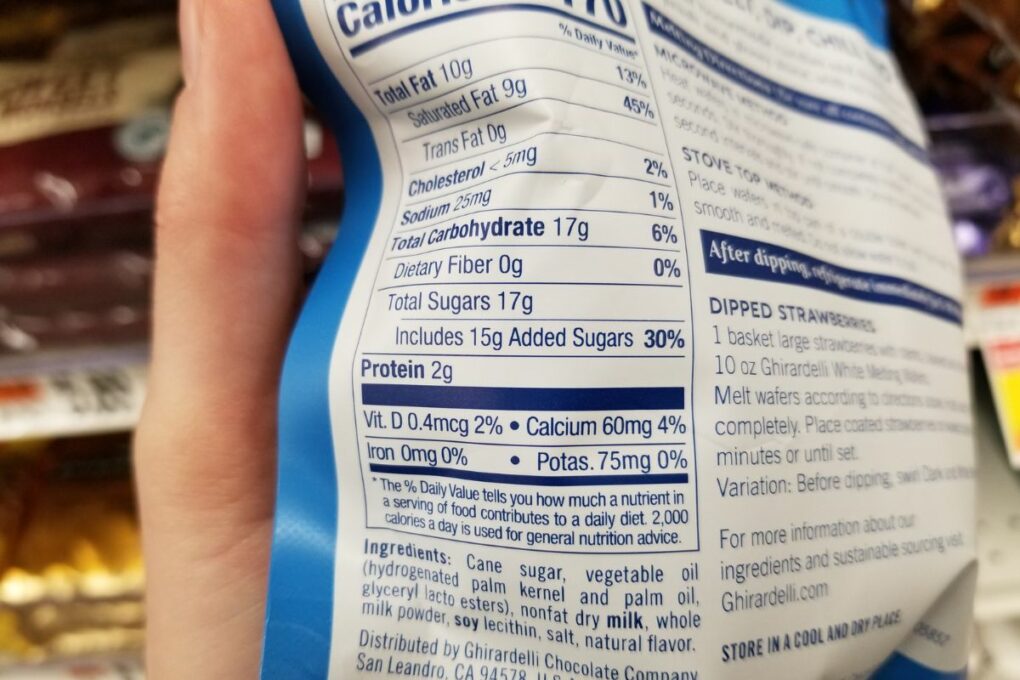Many, including myself, have been plagued with misinformation about what they eat, and chocolate in candies, baked goods, and even chocolate, in general, is no exception. Why is it that so many of these products contain artificial chocolate flavoring as opposed to the real thing?
In this article I unravel the truth behind why this is, its development, and why exactly it always tastes so fake. But first, let’s backtrack a little. Artificial chocolate flavoring is created in a laboratory using various compounds that mimic the taste of real chocolate.
This type of flavoring is derived from a blend of chemicals actually found in cocoa beans. However, unlike the natural flavors that come directly from plant materials or animal products, artificial flavors are synthesized in a lab, and don't have the same depth of flavor that real chocolate offers.
When biting into a treat made with artificial chocolate flavor, you'll often find that it lacks the rich complexity and satisfying mouthfeel of its natural counterpart. This is because artificial flavors, despite having similar molecular structures, cannot quite replicate the nuances present in actual chocolate. Here's why.

Jump To
Understanding Artificial Flavors
Natural vs. Artificial Flavors
When it comes to flavoring, there are two main categories: natural and artificial flavors. Natural flavors are derived from actual plant materials like fruits, roots, bark, and herbs, or from animal products like meat or dairy.
On the other hand, artificial flavors are all those not classified as natural, even if they possess the same chemical composition as their natural counterparts. Basically, any flavorings labeled 'artificial' were created in a lab.
How Flavorists Create Artificial Flavors
Flavorists create artificial flavors by combining chemicals to resemble a desired taste or aroma. These chemicals can be synthesized in laboratories or obtained from natural sources, like thos ementioned above.
However in many settings, artificial flavors are often preferred over natural flavors due to their cost-effectiveness and consistency (referring to reliability rather than how they affect texture).
Ingredients and Chemical Compounds
In the world of artificial flavors, a vast array of chemicals are used to create a desired taste. Some common ingredients include esters, aldehydes, and ketones, which can be combined in various ways to produce specific flavors.
Biotechnology also plays a significant role in the process as it allows for the manipulation of microorganisms and enzymes to create more complex flavors.
Although artificial flavors may sometimes be criticized for their synthetic origins, it’s important to note that they are rigorously tested and regulated to ensure safety and quality. So, while artificial chocolate flavor might not taste as rich or authentic as the real thing, it’s still a viable option for those seeking a low-cost alternative.

The Origin of Artificial Chocolate Flavor
Vanillin and Benzaldehyde
Artificial chocolate flavor primarily comes from two chemical compounds, namely vanillin, and benzaldehyde. Vanillin mimics the natural flavor of vanilla, which is a common ingredient in chocolate products. Benzaldehyde is responsible for the almond-like flavor often found in chocolate.
These artificial flavors were originally derived from petroleum but have since transitioned to more sustainable and natural sources.
From Petroleum to Edible Yeast
Vanillin and benzaldehyde’s synthesis from petroleum raised some concerns about safety and potential health risks in the past. However, advancements in technology have paved the way to produce these artificial flavors through fermentation using edible yeast.
This process involves culturing yeast with simple sugars, converting them into the desired flavor molecules. As a result, you've likely encountered artificially flavored chocolate products that boast more eco-friendly and natural sources for their flavorings.
This shift in production methods has helped alleviate some of the concerns surrounding artificial flavors derived from petroleum.
When it comes to the actual taste of artificial chocolate flavor, it often varies and may not precisely mimic the deep, rich flavor of genuine cocoa. The flavor profile of real chocolate comes from cocoa beans, which contain numerous chemicals that give it its unique taste.
Factors such as the type of cacao tree, growing conditions, and processing methods like fermentation and roasting can all impact the final taste of cocoa products.

Why Artificial Chocolate Flavor Falls Short
Cocoa Solids and Cocoa Butter
Artificial chocolate removes the rich and complex flavors derived from cocoa solids. Real chocolate contains cocoa solids, which provide a distinct chocolate flavor. Cocoa butter, on the other hand, adds a smooth and creamy texture to the chocolate. Artificial chocolate flavor often lacks both cocoa solids and cocoa butter, leading to an inferior tasting experience.
Artificial Vanilla vs. Natural Vanilla
Another reason artificial chocolate falls short is the use of artificial vanilla. While naturally-derived vanilla extract can elevate the flavor of real chocolate, artificial vanilla doesn't have the same depth and richness. This difference results in a less satisfying taste when it comes to artificial chocolate.
Texture and Temperature Sensitivity
Lastly, artificial chocolate often doesn't have the same pleasing texture as real chocolate. This is due to the absence of cocoa butter, which gives real chocolate a smooth and silky texture. Moreover, real chocolate has a specific melting point that’s around body temperature, causing it to melt in your mouth and release its flavors.
Artificial chocolate often lacks this temperature sensitivity, so you don't experience the same delightful sensation when eating it.
It all boils down to the absence of cocoa solids, the use of artificial vanilla, and the difference in texture and temperature sensitivity that contribute to artificial chocolate falling short of its real counterpart in terms of flavor and sensory experience.


Health and Safety Concerns
Food and Drug Administration Regulations
As I study for my Master's in nutrition, I'm learning more & more about the safety of ingredients like artificial chocolate flavor and its impact on your health. The good news here is that the Food and Drug Administration (FDA) regulates the use of food additives and flavorings.
This means that artificial ingredients of all types must undergo strict testing to ensure that they pose no significant risk to your health when consumed in moderation.
However, it's essential to be aware of which products contain artificial flavorings, as they tend to otherwise lack nutritional value compared to their natural counterparts, as companies using artificial flavorings are more likely to cut corners elsewhere, as well
Diacetyl
This is, however, one concerning component sometimes present in artificial flavors: diacetyl, a chemical used to create a buttery taste. While it has been approved by the FDA, studies have shown that exposure to high levels of diacetyl can lead to respiratory issues, commonly known as "popcorn lung."
The good news is that most food manufacturers have reduced or eliminated diacetyl from their products due to these concerns. Even though diacetyl isn't typically found in artificial chocolate flavoring, it's something to keep an eye out for
Allergies
People with certain food allergies or sensitivities should exercise caution when consuming artificial flavors of any type. For instance, those allergic to milk, soy, or nuts might react negatively to artificial chocolate flavorings derived from these sources, as even tiny amounts can bring abotu a reaction.
It's crucial to check the labels of any products containing artificial chocolate flavor, as some might contain trace amounts of allergens, which are not all required to be on food labels, depending on the amount present.

The Impact on Foods and Beverages
Fake Chocolate Flavor in Various Products
When you come across artificial chocolate flavor, it is usually found in products like candy, processed foods, and beverages. Companies like Nestle often use this synthetic version of chocolate as a cost-saving measure and for its longer shelf life, as well as to 'enhance' the addictive flavor of certain products.
These imitation chocolate products might contain dyes, sweeteners, or even artificial sweeteners to replicate the taste of real chocolate. Unfortunately, the experience is usually subpar compared to the real thing (for example, a chocolate-scented candle or massage oil).
Natural Sources vs. Artificially Added Flavors
A good way of putting it is that one is made naturally, while the other is man-made, a creation from humanity to replicate the sweet and delectable taste of the real deal.
Natural flavors come from sources such as plant material, fruit juice, vegetable juice, leaves, bark, roots, herbs, animal products such as meat and dairy, and even essential oils. A great example of a natural flavor source is vanilla, which comes from the beans (fruits) of the vanilla orchid.
Artificial flavors, on the other hand, are created in a lab and added to foods and beverages to mimic the taste of natural ingredients, essentially ‘man-made’ products. However, it is important to note that some artificial flavors can have the same chemical composition as natural flavors, making it challenging to differentiate between the two.
Artificial chocolate flavor is not derived from cocoa beans, like natural chocolate flavor, but rather created in a lab to resemble its taste. While both natural and artificial sources have their pros and cons, consuming excess artificial flavors may not be the healthiest option for your body, though in small amounts, they're probably not going to kill you.

















Comments
No Comments